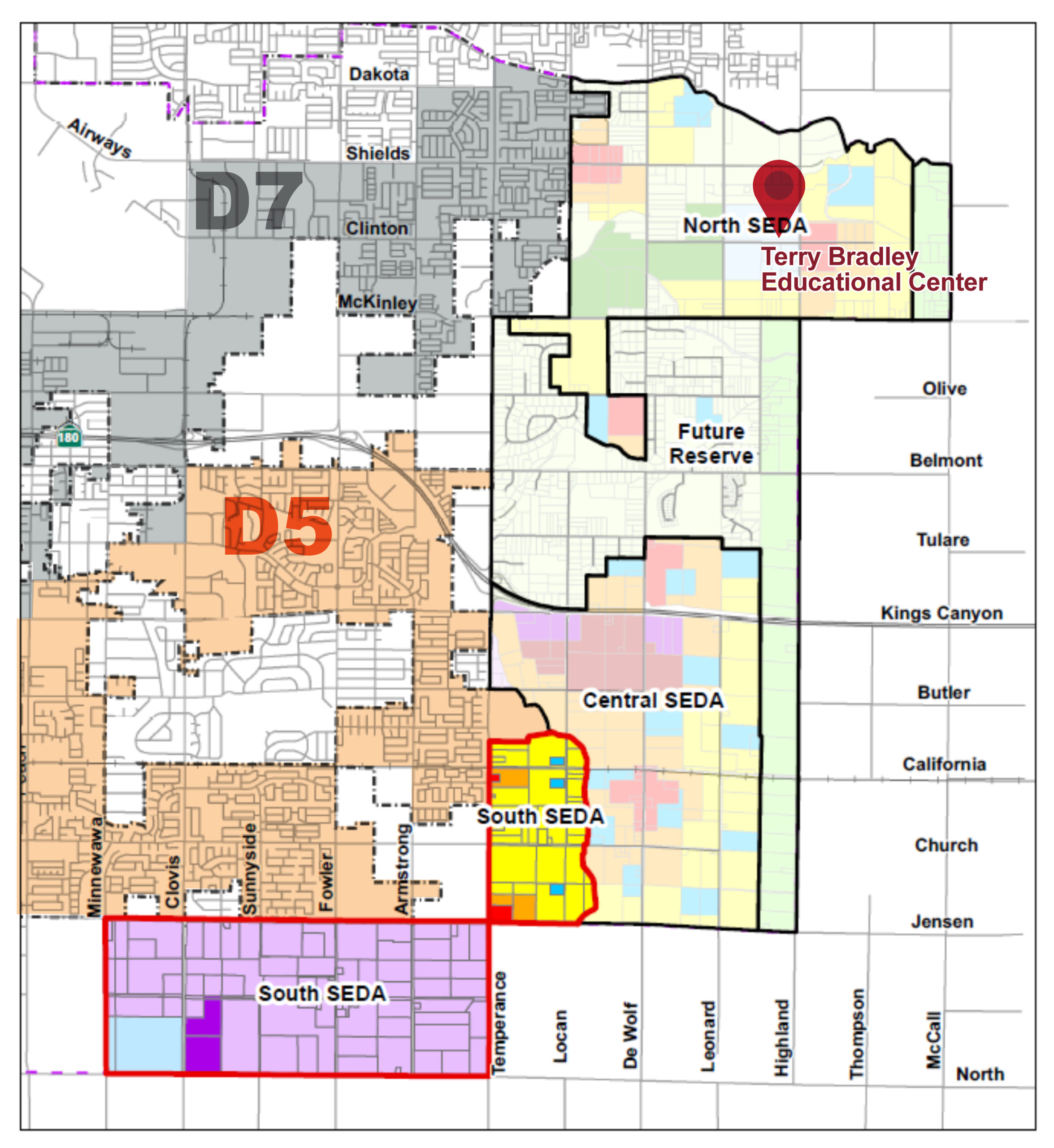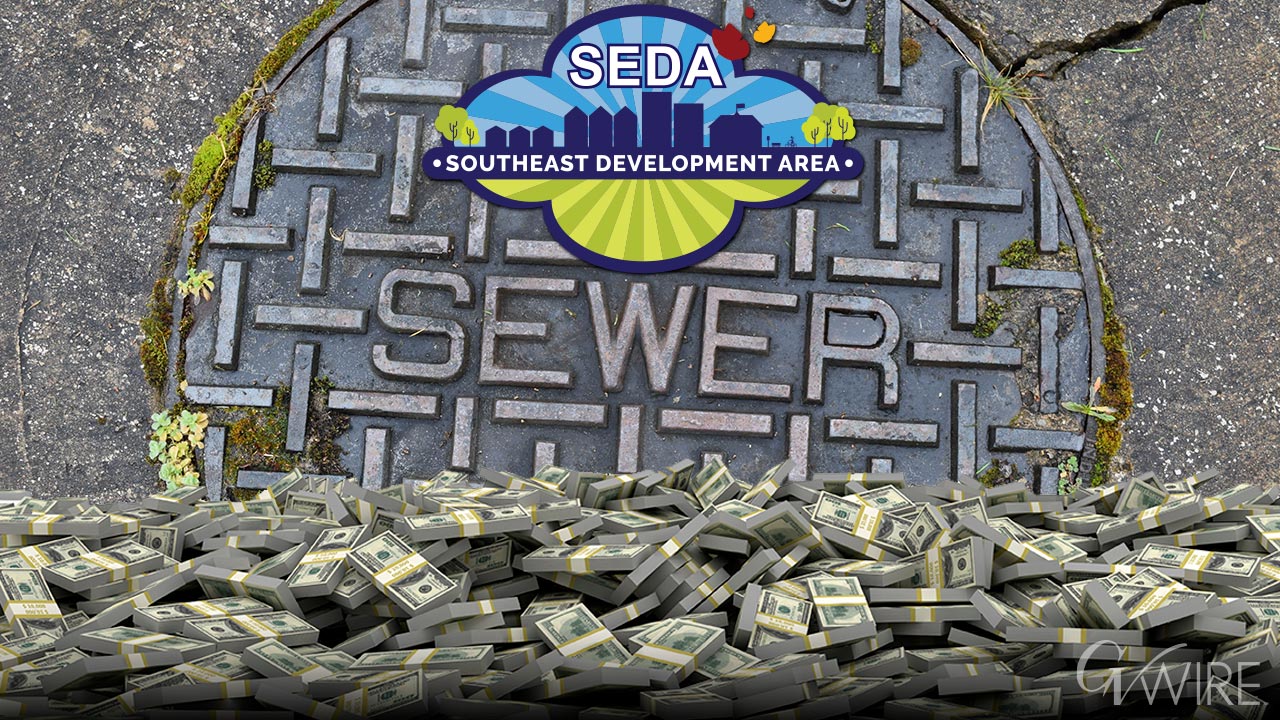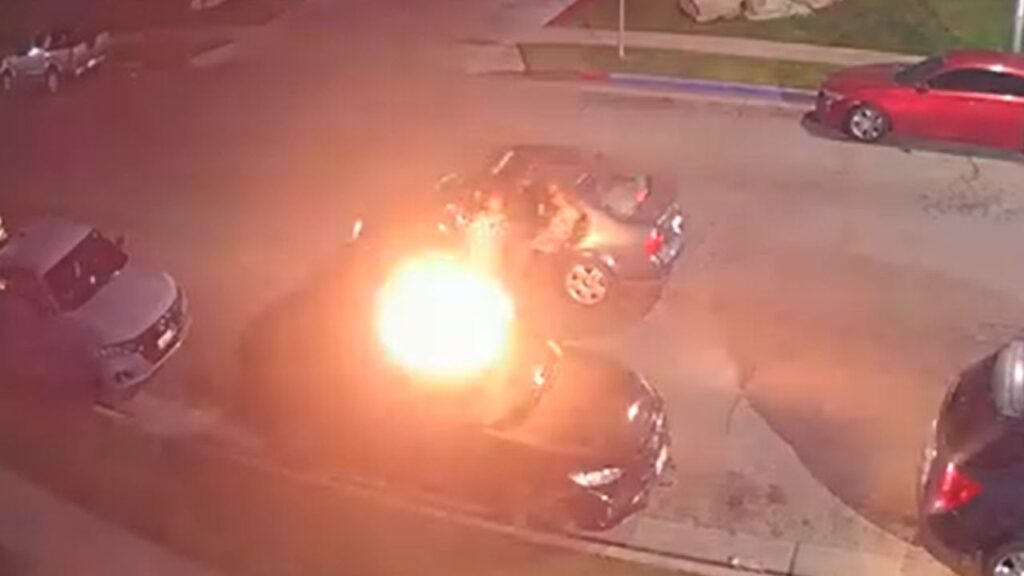Residents of Fresno's Southeast Development Area could be forced to connect to water and sewer, which could cost tens of thousands of dollars. (GV Wire Composite)

- Residents within Fresno's Southeast Development Area may have to spend up to $100,000 to connect to water and sewer.
- The plan compels residents to connect to city services within five years of them becoming available.
- The Fresno Planning Commission, on a 4-3 vote, recommended that the plan, with adjustments, go before the city council.
Share
|
Getting your Trinity Audio player ready...
|
If the Fresno City Council approves its plan to further develop southeast Fresno, it could cost $100,000 dollars if and when city services arrive for the rural residents now living in the area.
To turn the 9,000 acres of the Southeast Development Area into Fresno’s newest segment of town, the city will have to bring in the water and sewer necessary for the homes, offices, and businesses that would be built there.
When those services arrive, however, the plan compels the homeowners and farmers in the area — many who’ve lived there for decades — to hook up to city sewer and water lines. Residents there say they’ve been told the cost could be up to $100,000 per parcel.
The Fresno Planning Commission hosted a meeting Wednesday on SEDA that examined the zoning plan and the environmental assessment required to pass it.
Planning commissioners recommended sending the plan to the city council with alternatives that protect farmland and creates a consolidated business plan for the southern SEDA area.
The earliest the plan could before council is December.
The vote was 4-3 with commissioners DJ Criner, Gurdeep Shergill, and chair Peter Vang opposed.
Property owner Helen Ramming told planning commission members at the Wednesday meeting that she met with planning staff who told her about the changes. Residents may also have to pay to fill in wells and get assessed for school bonds, Ramming said.
City staff told meeting attendees that residents would have to pay for hookups within five years of services being available. She added that the city would make financing options available.
Further questions posed to the city by GV Wire were not returned.
“We’d be responsible for the cost of hooking up to water and lines … which would be estimated at a minimum of $50,000 for water, $50,000 for sewer, depending on how far back our property is,” Ramming said at the meeting.

Plan Needs Protections for Rural Land: Magsig
Fresno City officials have long said that development and annexation would not occur unless a property owner decides to sell and a plan is in place. City officials said development would not occur at all at once.
Many residents during the meeting said they would not be able to afford the cost to hook up to city services.
Fresno County Supervisor Nathan Magsig told GV Wire on Friday that when he was on Clovis City Council and they discussed development for Harlan Ranch, the city let residents stay on wells and septic systems until they chose to develop.
While he said that balancing growth with the needs of residents can be difficult, he said that the rural lifestyles need to be protected.
“A lot of residents I represent have significant concerns about SEDA and being able to enjoy the rural lifestyle that many of them moved out there for,” Magsig said.
Property Owner Brett Thompson said at the meeting the city ordinance doesn’t match up with what utility companies told them.
“Detailed or transparent answers from planning staff are not being given to you, commissioners, or to the residents,” Thompson said. “At neighborhood meetings, public utilities representatives told residents when a water line comes through it is your choice whether to connect to it or not.”
Can SEDA Pay for Itself?
At the meeting, city staff attempted to address the issues raised by the dozens of commenters — almost all of whom oppose SEDA.
Two residents in the SEDA area at the meeting did support the plan.
One, Danny Vartan, said farming has become difficult and “most farmers are break even at best.”
“This 9,000 acres that are proposed here, there’s 1.8 million acres of farmland in Fresno County,” Vartan said. “It’s just really not going to have much of an impact on the agricultural nature of our region, but it could be a really excellent place to live.”
City staff said of the 9,000 acres, 2,475 are considered “prime farmland,” 1,352 are “farmland of statewide importance,” and 1,075 are considered “unique farmland.”
Opponents to the plan brought up concerns about population forecasts, pollution, and the loss of rural lifestyle. One of the recurring objections from residents throughout the city is the project’s estimated $4.3 billion price tag at buildout.
They also say that outward growth will take away from the city’s interior.
“It’s not just another plan, it’s an enormous infrastructure bill,” said April Henry a west Fresno resident and executive director of the Highway City Community Development nonprofit.
Developing in the first portion of SEDA would cost $61 million upfront, according to a city study. Those costs could be absorbed by impact fees, development director Jennifer Clark said.
The full buildout estimate of $4.3 billion includes infrastructure, police, fire, parks, transit, and school costs.
Existing fees could only bring in $1.3 billion.
Criner said those were many of the reasons why he couldn’t support the SEDA plan, as did Shergill.
“I can’t support moving forward … infrastructure, water, sewer, and roads have not been fully demonstrated or how it will be funded,” Criner said.
Development in Southeast Inevitable: Bray
The SEDA plan is the only specific plan to have a financing plan attached. The recently passed West Area Neighborhoods Specific Plan did not have one nor did the Southwest Fresno Specific Plan.
City code requires SEDA pay for itself, said Sophia Pagoulatos, manager of long-range planning with Fresno.
The city can assess impact and development fees to account for costs, she added.
Fresno Development Department Director Jennifer Clark said new growth gets special tax assessments to cover police and fire costs.
She also added that a tax agreement between the city and county benefitting the city could bring additional general fund dollars far into the city’s future.
Fresno has also beat population forecasts from the California Department of Finance, Clark said. A housing market study shows demand for homes in all areas of the city.
“The inaccuracy of the predictions has led to misunderstanding of estimates versus reality,” Clark said.
Commissioner Kathy Bray said that her heart breaks at the plan, but with Clovis Unified’s new Terry Bradley center, she said development was inevitable.
Without a plan, sprawl would be unorganized and lack stringent environmental mitigations, Bray said.
“If you think that development’s not going to follow that school, you’re mistaken,” Bray said. “I saw it happen with Clovis East.”
The 2014 General Plan allows for development to occur. Similarly, Bray said other cities could pursue SEDA.
“If we don’t pass this plan and somehow it goes to the city council because even if we don’t pass it, they still could (vote it up or down),” Bray said. “And if they don’t pass it then LAFCO will take the land and give it to Clovis or Sanger and they’ll develop it, and you don’t have any idea what their plan is going to be. But it’s going to happen because the school is there.”
RELATED TOPICS:

Could Fresno’s Southeast Plan Cost Current Residents $100,000?
















